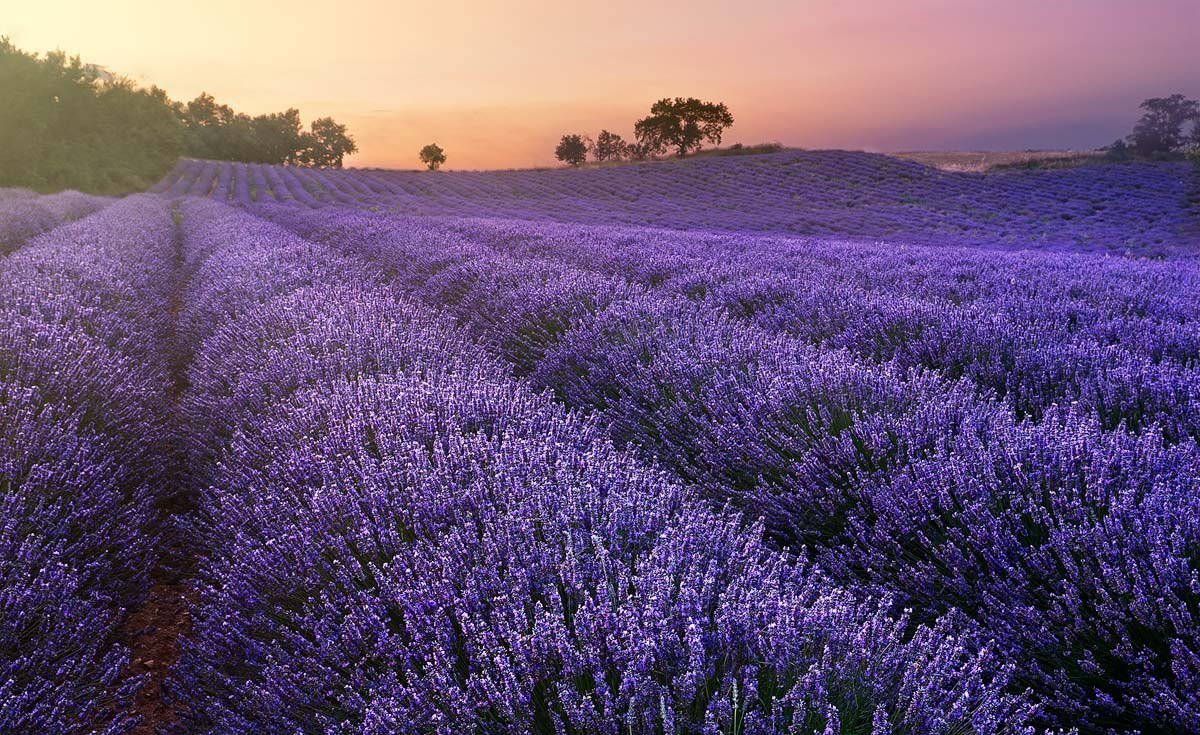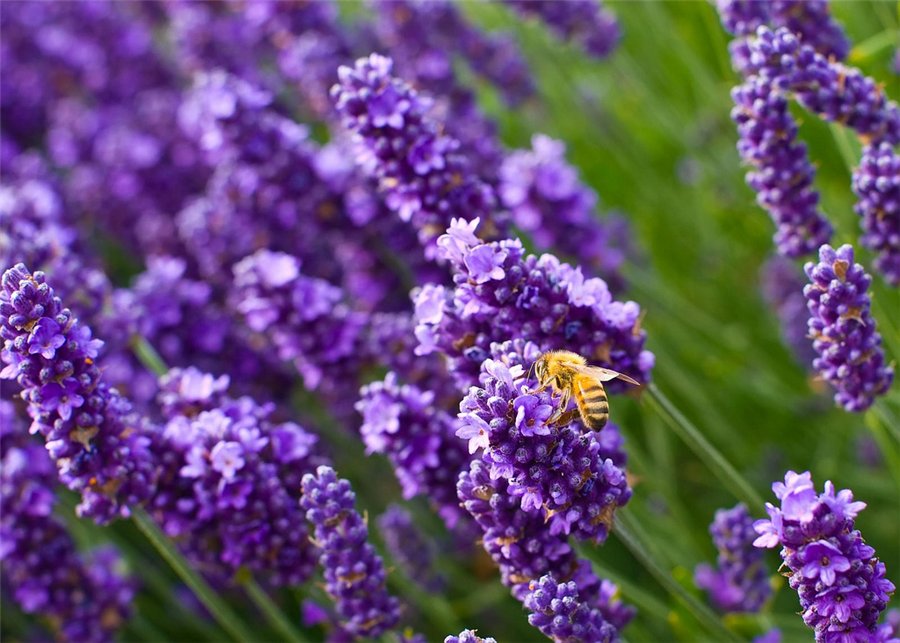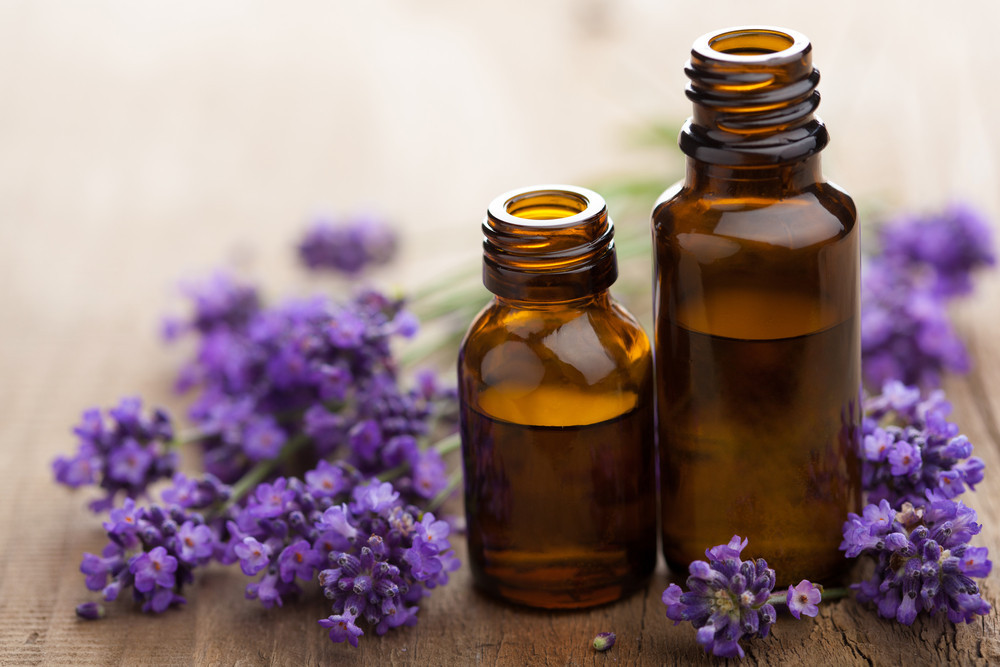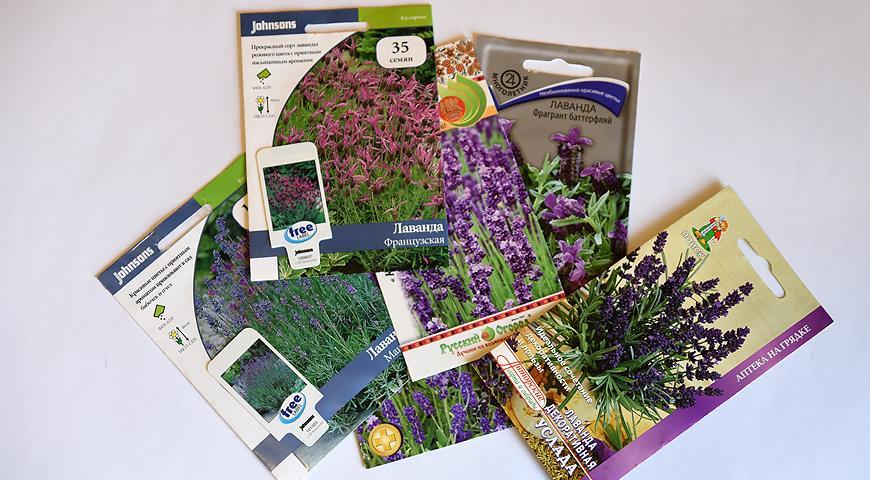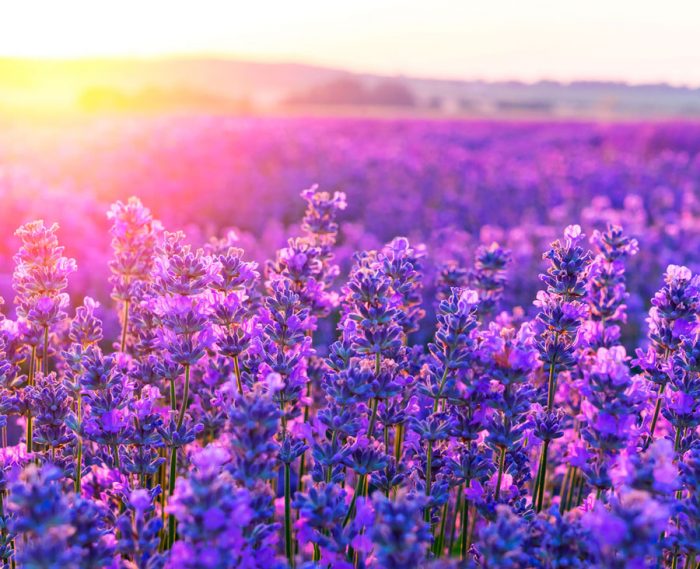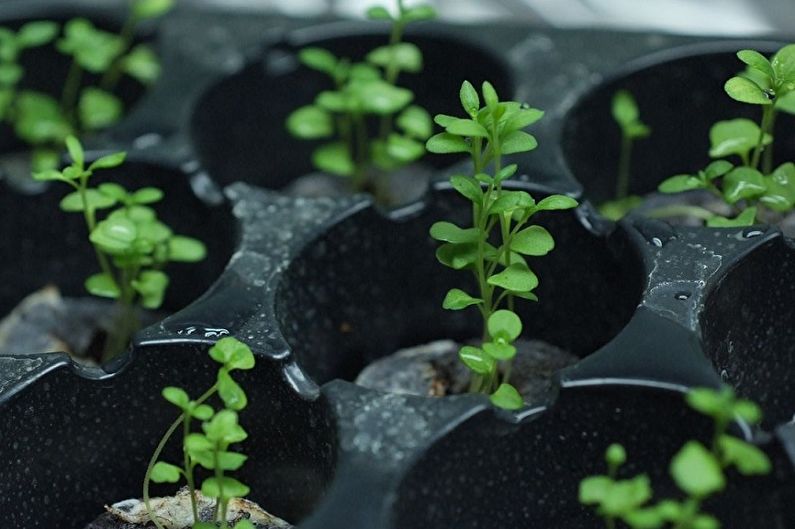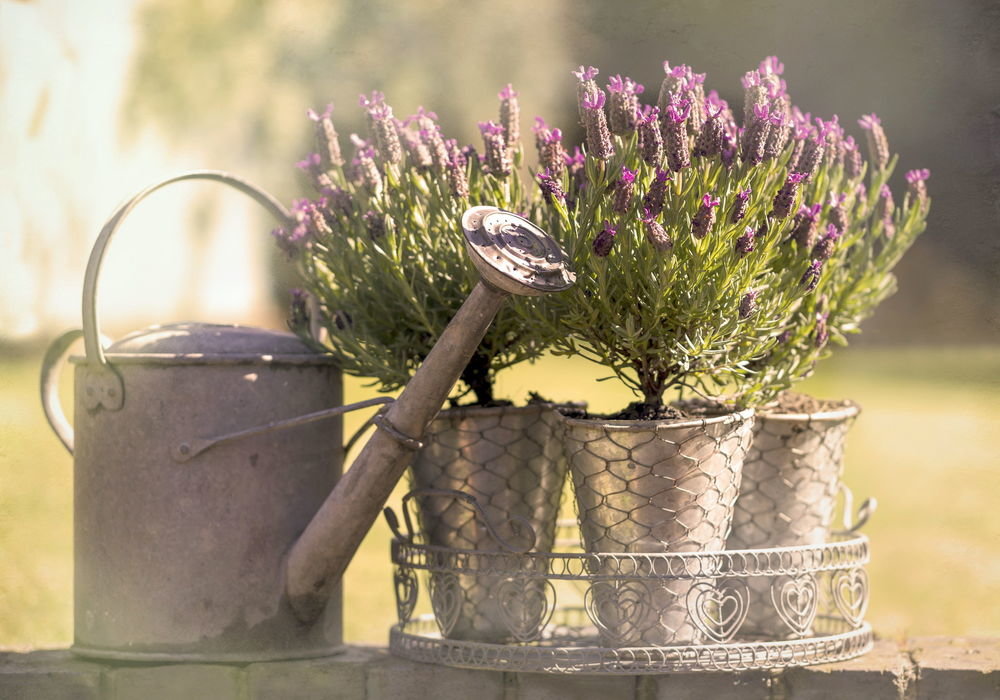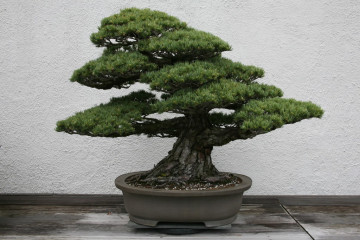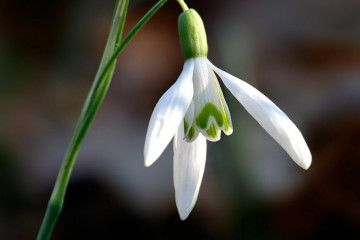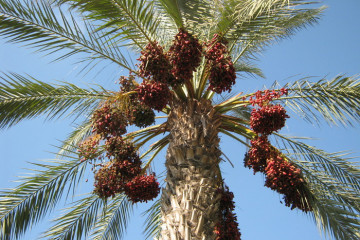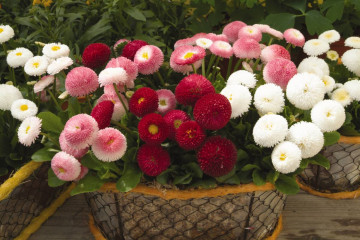Lavender seeds - what seedlings look like
Content:
Among the flowering plants most known to any person is lavender. People like the shade of her flowers so much that they even got the name of the same name - lavender.
Many people dream of having this perennial in their garden, but not everyone knows how to grow lavender from seeds.
Lavender as a flower culture
Lavender, or Lavandula, is a non-herbaceous plant. It is a shrub, a representative of the Lamiaceae species, which unites about 30 species. You can meet them in Africa, Arabia, southern Europe, India, Australia.
The first name of the flower came from the Latin "lava", which means "wash". This is because the ancient Greeks used it not only for medicinal purposes, but also for washing and washing their clothes. A little later, the French christened the fragrant flora lavandre, it was this name that spread throughout the world.
Types of lavender
In total, this genus unites as many as 30 species. Of these, only two are most often cultivated. Namely:
- Narrow-leaved lavender (aka English and medicinal);
- Lavender broadleaf (or French).
English lavender is the most common worldwide. She has narrow leaves and spike-shaped inflorescences. It is she who is grown on the streets in the middle lane. This is because it is able to calmly overwinter in the open field, it does not have to be dug up and transplanted into the house.
The French look is much more capricious. He has wider leaves, shorter inflorescences. The main difference is that French lavender is killed by cold temperatures below -10 ° C. Therefore, it is more often grown at home; when grown in the garden for the winter, it is necessarily dug up and transferred to the room.
Benefits and Applications
Even the ancient Greeks noted the benefits of this flowering plant. As time went on, the boundaries of people's knowledge about the world expanded, and there are no doubts about the beneficial qualities of lavender to this day.
The most important for medicine in this flower is its essential oil. This can be obtained by squeezing the entire above-ground part of the flora (and not only from flowers, as some believe). The oil has the richest composition: it contains linalool, coumarins, geraniol, borneol, and other useful elements. Thanks to them, lavender ether can be used as follows:
- For the healing of abrasions, cuts.
- With dizziness, headaches.
- For insomnia and nervous disorders.
- For toothache.
- To get rid of edema.
- With discomfort in the stomach and intestines.
- As an anthelmintic.
The flower is used in folk medicine in different ways: both lavender seeds and its sprouts, flowers and leaves are used. Teas and poultices are made from it. It is added to ointments, baths are taken with it.Lavender oil can be used for aromatherapy.
Moreover, the official, scientifically proven medicine also uses this flora. True, in this case, flower extract is more often used.
Home-grown lavender varieties
Lavender is a flower that can be grown both in the garden and at home. In this case, for the second purpose, the French type of flower, serrated or hybrid is usually chosen. They are small, they are afraid of frost, therefore in the middle lane it is better to grow them immediately at home. Among all the variety of varieties, the following are especially interesting:
- Helmsdale. This is a variety of broadleaf lavender. It differs in color of flowers - it is not lilac, rather burgundy.
- Alba. This variety is a variety of Dutch lavender. Its difference is white flowers.
- Sawyers. This is also a hybrid lavender, the flowers of which have a lilac hue.
- Royal Crown is a jagged lavender variety with delicate lilac flowers.
How to collect seeds for sowing
Growers prefer lavender propagation through seeds. They can be obtained in two ways: by collecting them yourself and choosing them in the store. In each case, there are subtleties that you need to know.
Collection
You can collect fully blossoming inflorescences in the garden (or buy a bouquet with them in the store) and dry them. After that, small seeds will fall off.
One characteristic of lavender seeds is their amazing germination capacity. Even after five years from collection, they can sprout. But only with proper storage (in an airtight container) and germination.
Purchase
It is difficult to tell by the seeds themselves whether the variety is being sold in a paper bag or not. In order not to be surprised at a flower change after the sown seeds have sprouted, first of all, you need to look at the price. The more interesting and beautiful the plant is, the more expensive its seeds will be. They are not cheap.
The second point that you must pay attention to is the information on the package. It should contain:
- Variety name;
- Manufacturer;
- Care recommendations.
Seedling care
In order for lavender seed to give strong healthy shoots, you should follow a number of rules for caring for it. In particular, these are:
- Shine. Lavender is an extremely light-loving plant, therefore, in no case should it be put in the shade.
- Warmly. The flower will not like either heat or cold - temperature indicators should vary between 15-21 ° C.
- Picking. Diving is transplanting sprouts into a larger container. It is more convenient to germinate seeds in a shallow box. Once the lavender sprouts release the first pair of true leaves, they need to be transplanted into a deeper pot. It can be separate or shared (with a large distance between seedlings), but spacious enough in any case. This is because a seemingly small sprout has strong enough roots, which are cramped in the vessel for germination.
What is needed for seed germination
When the seeds of the odorous flora are sown in the ground, they still do not need replanting, feeding and many other conditions. So far, they have only two requirements, but they will have to be observed:
- Lighting. Lavender seeds need about 10 hours of daylight per day. If the weather does not allow the condition to be fulfilled naturally, the seedlings will have to be illuminated.
- Temperature. For germination, you must strictly observe the temperature regime indicated above.
Sowing instructions for seedlings
With a flower such as lavender, English seed cultivation at home requires adherence to a certain order and rules. However, with other species, everything is the same.
Seed selection
The seeds can either be harvested by yourself or purchased from the store. In any case, they must meet the following criteria:
- Be harvested from fully blossomed buds.
- Store properly in medium temperature (not frost or heat), in a closed container.
- Do not be damp or tainted by pests.
- When buying, don't be cheap.
Seed stratification
Lavender seeds, even with the right choice, will not sprout on their own. He needs stratification. This is a natural "trigger" of the seed growth mechanism by exposing it to critical temperatures. Moreover, it can be carried out both at high degrees and at low ones. In the case of this particular flora, stratification is carried out only by cold.
And there is one peculiarity. It is not enough just to put the seed in the refrigerator for a minute - the effect of frost should continue for quite a long time.
What is stratification
Stratification is carried out in two ways: natural and artificial. The first is to sow the seed directly into open soil before winter.
To grow lavender from seeds for seedlings at home, you need to know how the seeds are stratified artificially. This means that they should be kept in the cold for at least a month and a half before sowing. More is better. This procedure is carried out as follows: the seed is mixed with sand or earth and placed in a resealable container. It is sent to the refrigerator for at least 8 weeks, at a temperature of about +5 ° C. But the seed will not survive freezing.
What to sow seeds
In addition to other preparations for sowing, the gardener is faced with the question of choosing a container and soil.
Lavender needs loose, nutritious soil. The easiest way is to buy a ready-made mixture for seedlings or universal for indoor plants in the store. But before germination, it is recommended to bake it in the oven.
The container should be wide, spacious, and shallow - no more than a cm in depth. Making life easier for yourself and sprouting a flower in a cassette will not work - this method does not suit him.
Sowing
The sowing itself should be carried out according to the following step-by-step instructions:
- The calcined substrate is placed in the container. It cannot be accepted, it must be loose.
- The ground must be well sprayed with water from a spray bottle.
- Flower seeds are laid out on top of the ground quite rarely - with indents of at least 2 cm from each other.
- From above they need to be covered with soil, too, sifting it from above. The top layer of earth should be 2-3 mm.
- After sowing, be sure to make a greenhouse by covering the container with cling film.
Transplanting seedlings into open ground
The first year from germination from the fragrant flora, one should not expect flowers and, in fact, a smell. She will spend this time on the formation of roots and will bloom only next year. With the onset of warmth, the sprouts can and should be transplanted outside. How to plant lavender seedlings according to the rules:
- The place for sprouts needs a sunny, warm one.
- Perennial prefers sandy-clay soil.
- The soil for lavender must be fertilized with mineral fertilizing before planting.
- The space between the bushes should be at least 30 centimeters (preferably all 40).
- Lavender seedlings need to be hardened before replanting. Pots with it should be taken outside for several hours during the week.
Sowing seeds directly into the ground
The lilac flower can be grown more simply without preparing seedlings. You need to know how to properly plant lavender using seeds.
Landing dates
In order for a lavender seed to start growing, it must be stimulated with cold. For seedlings, you have to keep the seed in the refrigerator. When sowing in open ground, you don't have to tinker like this directly - it is carried out in the fall, in October, stratification will take place in winter in a natural way.
Loosening and feeding
After wintering during the growing season, lavender must be fed. It is best to choose fertilizers that are high in potassium over nitrogen. Otherwise, the shrub will stretch up strongly, but it will give few buds.
This flora also needs to be cultivated. It needs to be loosened after winter, and also mulched.Mulching is creating a layer on top of the soil that helps moisture not evaporate as quickly. Fallen leaves are suitable for these purposes. Under the very root of lavender, the ground is not mulched.
Watering
This flower loves water. It needs to be watered regularly, preventing the soil from drying out. However, thanks to the mulching of water, the plant will not need much. Watering, most likely, will not have to be done daily.
Young plant care
The first year of life in the open field, lavender should not be allowed to bloom, it is recommended to cut off all inflorescences. This is because at this time the root of the flora should get stronger, it must adapt to a new place.
Preparation for wintering
English lavender can withstand temperatures as low as -25-30 ° C. But without additional shelter, the flower may not survive such low temperatures.
First, you need to prune the bush. Only 4-5 young shoots are left on it, the rest is cut off.
Secondly, even before the first frost, the bush must be tightly covered with spruce branches. Fallen foliage cannot be used - the chances of rot are high. You can cover crops with leaves. When the first snow falls, it is recommended to separately warm it up with a dense layer on homemade shelters. So the plant will have the opportunity to survive the winter safely.
Potted lavender care
You can also grow this flower as a houseplant. Growing lavender from seeds in this case will be similar to how it is done for seedlings. In the future, there will be only a few special points for flower care:
- Indoor odorous flora will more easily tolerate dry land than excessive moisture.
- The room with lavender will often have to be ventilated. In winter, be sure to take the flower to another room. Frost will kill him.
- At the bottom of the pot, it is imperative to create a layer of expanded clay drainage.
- A house plant needs 6-8 hours of daylight. It is best to place the pots with it on the sunny side. In winter, additional lighting with a special lamp may be required.
In general, lavender is a non-capricious plant. Subject to all the necessary conditions, the seeds will quickly please with seedlings, and those with time - with lush bushes. Soon, a person's apartment or cottage will be decorated with a bush with incredibly fragrant flowers.
